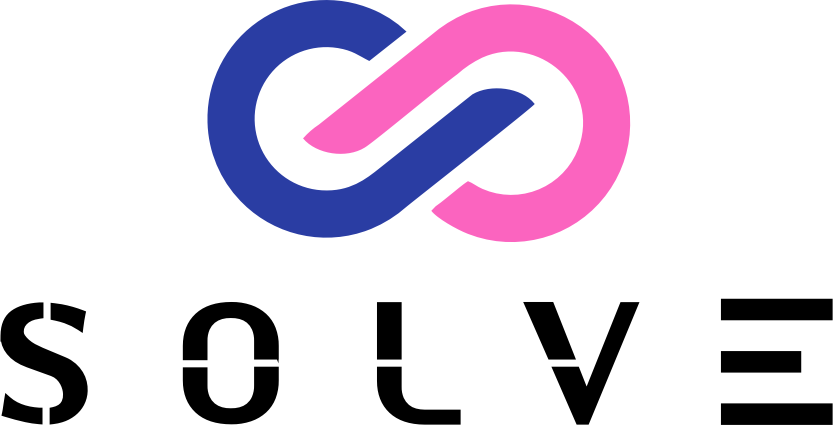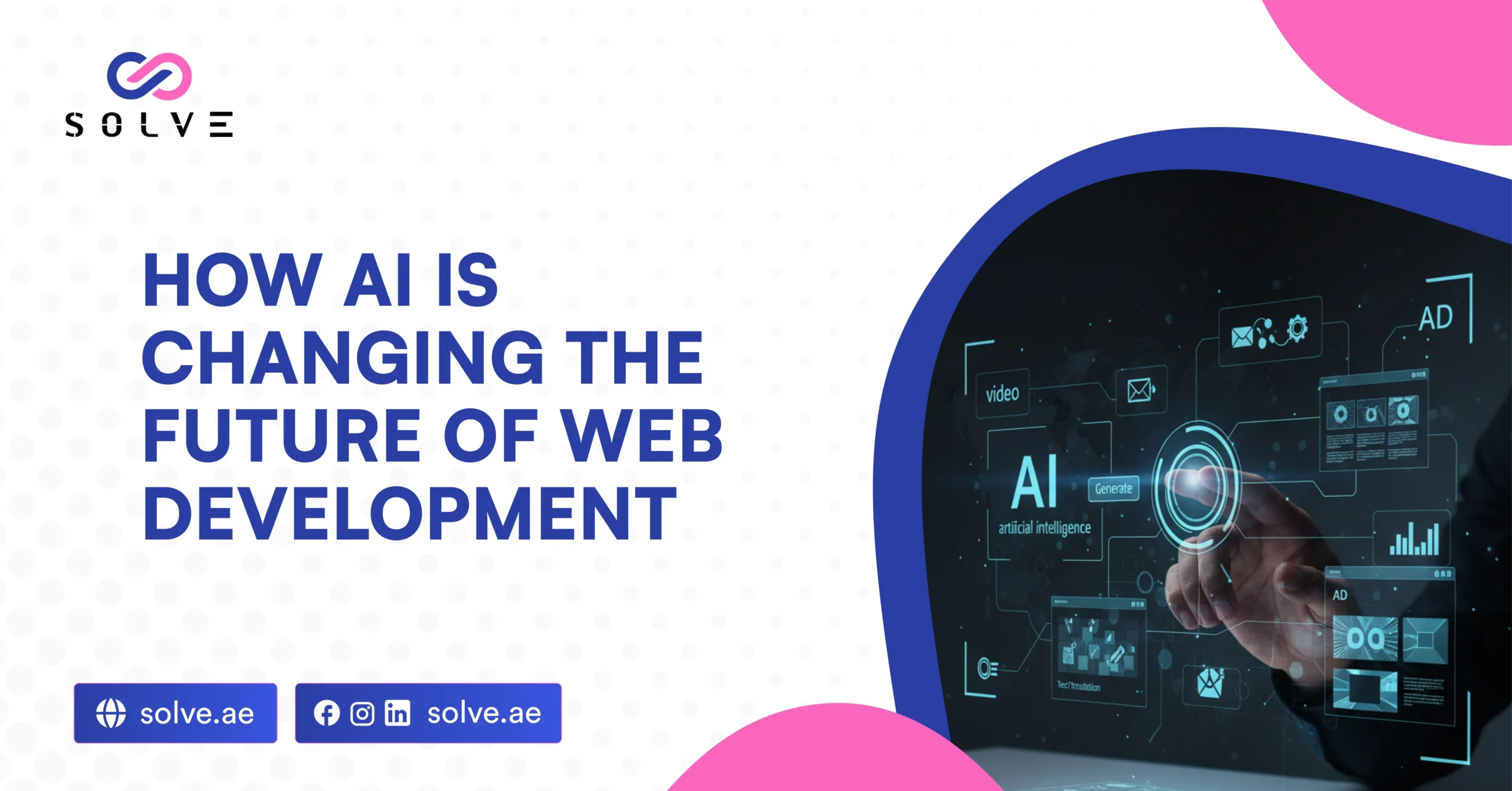- By Vanshika Choudhary
- October 24, 2025
In the scope of the discussion about technologies, artificial intelligence (AI) is no longer just a thing of the future — it has already become an important factor in the process of creating, designing, and optimizing websites. AI is transforming the web development process in nearly every step, as it automatically performs coding tasks and applies intelligent techniques to personalize user experiences.
The developers are taking advantage of machine learning models, smart design tools, as well as automation platforms in building websites that are not only fast and smart but also efficient in terms of resources consumed compared to the past.
This blog is going to discuss the change AI has brought to the future of web development, the tools and techniques that are powering this change, and what developers need to do to be in an AI-equipped era.
Code Generation and Testing Automation
AI is one among the many factors changing web development, and one of the most prominent ones is automated code generation and testing. AI-driven development tools can now do those tasks, which before used to take hours of manual effort, in minutes.
AI-Powered Code Assistants
Code-suggesting tools like GitHub Copilot, ChatGPT, and Tabnine are now powered by AI and suggest code snippets in real-time as the developer types. Developers give natural language commands, and these assistants come up with the relevant code structures in no time. This speeds up the development process and, at the same time, reduces syntax errors and increases code efficiency.
Automated Bug Detection
AI systems are capable of spotting mistakes and inconsistencies in the code long before they are able to cause the collapse of the website. Using methods of prediction based on past bug data, the bug detection tools may even go as far as suggesting solutions besides predicting the issues, thus cutting down on project time and increasing reliability in code.
Faster Testing and Debugging
The manual testing process usually takes a long time and is also very prone to mistakes made by human testers. On the contrary, testing tools that are AI-driven work by automating the testing process, locating bugs in various browsers, different screen sizes, and across various operating systems. Check out our latest blog post on How Generative AI Is Shaping the Future of Robotics.
Continuous Learning Systems
The AI coding assistants are going to become smarter with each and every use by the developers. The tools are going to acquire knowledge from the past projects, and, therefore, they are going to be more on point and generate more accurate and relevant code every time.
Enhancing User Experience (UX) Through Personalization
The modern-day websites are dynamic; they change their forms and functions at the very moment according to the users’ tastes and actions. One of the major players in the personalization process is AI.
Personalized Content Delivery
AI-based content delivery analyzes the user’s profile according to their surfing habits, buying history, and time spent on a site, thus providing users with content recommended just for them. For instance, the use of AI for product suggestions based on a user’s preferences in online shopping sites not only boosts sales but also keeps customers loyal.
Behavioral Analytics
Artificial Intelligence keeps an eye on and deciphers the interactions that users have with a website; it can tell which pages they visit, where they leave, and what attracts their attention. Moreover, this knowledge equips the developers and the designers with the tools to improve the arrangement of the site and flow for user engagement.
Chatbots and Virtual Assistants
Websites already count AI-led chatbots among their must-have features. Such chatbots render customer service 24/7, provide quick answers to frequently asked questions, and help customers with navigation or purchasing — consequently, user satisfaction actually increases and no human is involved.
Predictive Design Adjustments
AI makes it possible for websites to change their interface according to user behavior. For example, if a major part of the users leave the form halfway through, AI could suggest either shortening the form or altering its layout to make it less of a hassle for users.
Streamlining Design with AI-Driven Tools
The designers of today are getting the most out of AI in terms of creativity and speeding up the execution of the design processes that are repetitive, thus giving them the time for more consideration and user impact.
Automated UI Design
Uizard, Figma AI, and Adobe Sensei are some tools that can transform user interface designs from just plain text or rough sketches. Also, developer can just mention what he needs—for instance, “a landing page with a call-to-action button “—and the AI produces a neat layout in a few seconds.
Smart Color and Font Matching
AI has the capability to understand the brand’s personality and make the right choice of color schemes and typography that not only look good but at the same time are easy to read.
Responsive Design Automation
With the help of AI, websites can automatically resize and reposition their content according to the device and screen size used by the user. This process of developers having to go through the manual testing and design tweaking for mobile, tablet, and desktop versions is now completely eliminated.
Real-Time Feedback
The analysis of heat maps and user engagement data through AI tools gives the designers immediate feedback. Also, this analysis helps them to know the parts of a website that attract the maximum number of visitors and the areas that require enhancement.
Improving Website Performance and SEO
Online success significantly depends on website performance and search visibility; hence, AI is the new power in the optimization game, helping more effectively than ever before the two factors, along with their optimization, sometimes get left out in the rack.
Performance Optimization
Metrics like load speed, image compression, and page responsiveness are kept on the radar by AI tools. Queried for an issue in performance, the tools suggest certain actions—image optimization or code reduction, for instance—to improve both speed and user experience.
Content Optimization for SEO
Voice Search Adaptation
The AI that allows easier access to the conversation mode of the webpage is the same, helping websites to be optimized for natural language queries when voice assistants like Alexa and Siri become popular. It concentrates on conversational keywords, thereby allowing businesses to reach more voice search results.
Predictive Analytics
AI has the ability to foresee traffic spikes, seasonal trends, etc., and this information allows the developers to take their treatments and systems preparations in advance, and hence the website is made stable even during the peak traffic hours.
Strengthening Web Development Security with AI
Online businesses consider cybersecurity as an utmost priority, and AI is the primary defender against hackers and other threats that are constantly changing.
Threat Detection
AI systems that are equipped with this technology monitor the entire network and are able to spot the odd ones out, indicating that an attack is on the verge. By doing so, AI contributes to the prevention of accidental open doors for hackers and unauthorized persons’ access to the data.
Fraud Prevention
Machine learning algorithms can spot fraudulent activities like a series of failed logins or irregular transaction patterns. They can cut such activities off instantly, making the fraud risk even smaller.
Data Protection
AI not only intensifies the existing security measures but also encrypts the data of all users to ensure that no one can see it. On top of that, AI’s role in organizations complying with global privacy laws like GDPR is through automatic compliance checks.
Self-Healing Systems
Sophisticated AI can do the routine patches and repairs of the software as soon as they are discovered without having the hassle of manually updating. Therefore, the site continues to be protected even when the developers are not present.
The Rise of No-Code and Low-Code Development
AI is the one turning web development into a non-techie thing — it is making it possible via no-code and low-code platforms, for instance, with the use of the drag & drop method.
Simplified Development Platforms
Wix ADI, Framer AI, and Webflow are the names of the tools that use AI to make the process of website designing through a simple drag-and-drop interface. Also, one can create fully working and attractive websites without a single line of code written.
Natural Language Commands
AI allows users to just tell the system what they want in plain language — for example, “Get me a blog layout with three sections, including a signup form” — and the system automatically builds it up for you, thus saving your time and effort.
Faster Prototyping
Using these platforms, startups and small companies have a chance to see whether a new idea works or not very fast. Moreover, instead of going through the weeks-long process of creating a website or landing page, they can do it in just a few hours, thus cutting down the company’s expenditures and time for the development process to a great extent.
Bridging Skill Gaps
AI ushers in the era of non-tech people in the world of digital or virtual creations. Moreover, by opening up the technical doors, the non-tech people will be able to carry out most of the work, which will make the professional developers’ work much easier, as they will have to deal with only the complex projects.
Preparing Developers for the AI-Driven Future
The fact that AI is taking over in a lot of the web development processes does not mean that creativity is being done away with. It rather means that human creativity will be enhanced.
Learning AI Integration
It is advisable that developers should get to know the various AI tools, APIs, and technologies like TensorFlow and OpenAI’s API. Therefore, It is going to be the best skill to have, knowing how to mix the features that drive AI, like recommendation engines or chatbots, into a project.
Collaborating with AI Tools
The change of mindset regarding AI being a competitor should come about, so that developers can start seeing it as a partner. Also, the mixing of AI’s automation with human reasoning and solving problems would result in developers coming up with even smarter and more inventive solutions.
Focus on Creative Problem-Solving
Developers will be able to give much of their time to coming up with new digital products that are user-friendly, fast, and perform well, as the AI will be the one taking care of the repetitive coding tasks.
Conclusion
It is speeding up, making the entire development process smarter and more efficient, while simultaneously raising the quality and functionality of websites. Contact us as the use of AI is already present in all aspects of web development, from automated code generation to personalized user experiences and security enhancements.
The future of web development will be collaboration — between human creativity and artificial intelligence.Also, those developers who are willing to take this path will be the ones to shape the digital innovation of the next generation.




